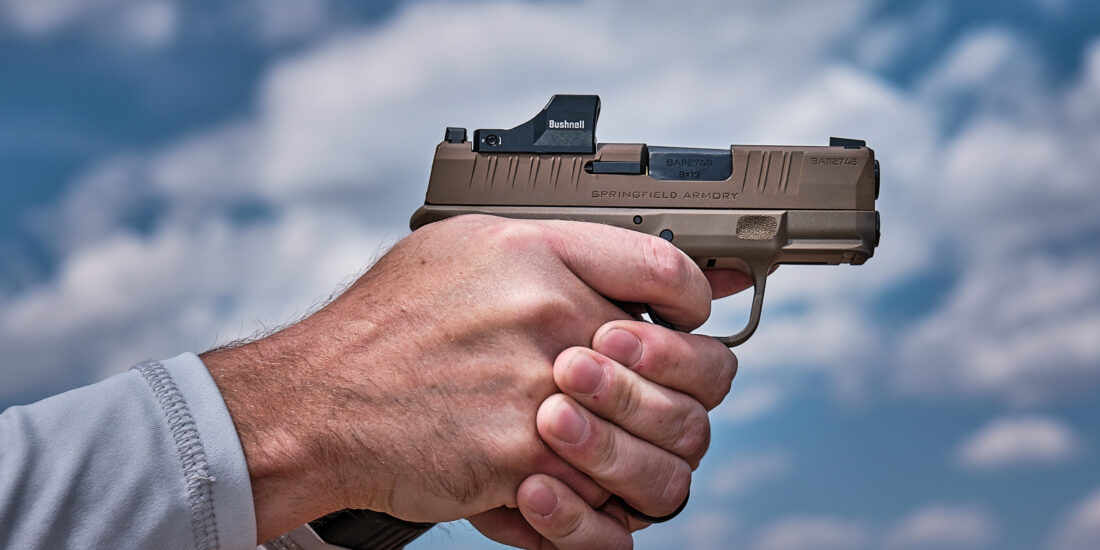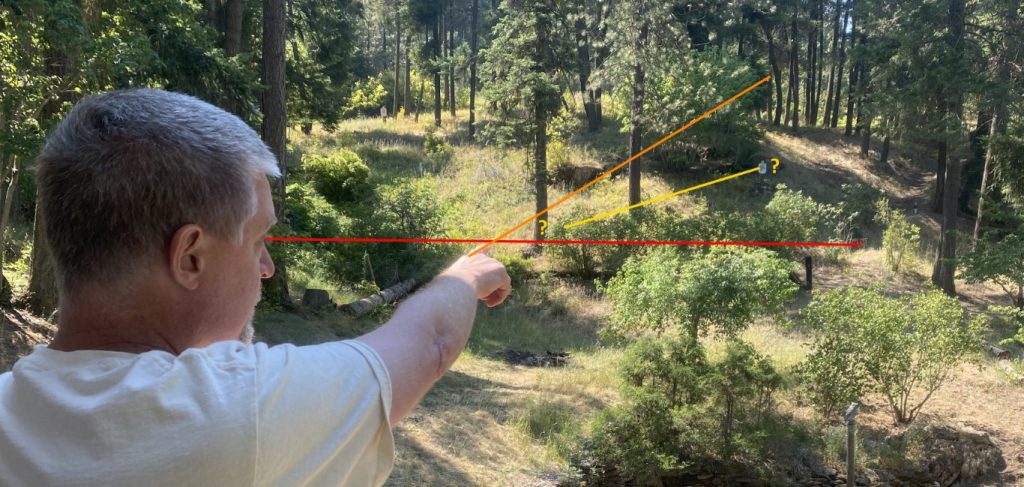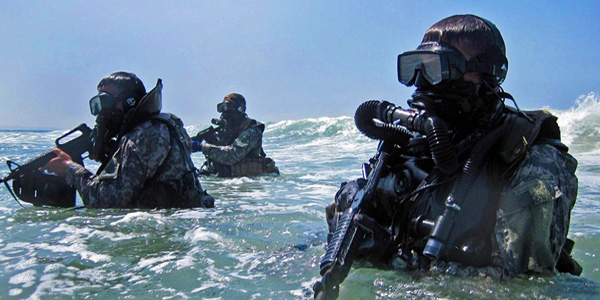Different Ranges, Different Targets: Handgun Aiming Methods

There are two things you must do to hit a target. You must index the barrel on the target and you must pull the trigger without moving the sights. This is simple but not easy.
Let’s talk about how we index the barrel. There are three predominant methods of aiming a handgun:
Sighted Visually Indexed Retention
Sighted – The shooter aligns the sights with the intended target, to the degree necessary for the difficulty of the shot(s). This is the preferable method of aiming in most circumstances.
Retention – The shooter aligns the gun on the target using their body position (typically hips).
This technique is typically used as a firing position if the threat is too close to extend the shooting arm. Use of the method is extremely rare.
Visually Indexed – The shooter aligns the gun with the target using their peripheral vision of the gun in addition to their body position. This method is more refined than the retention technique, however it is not as precise as the using the sights.
This aiming technique provides the shooter with a method to identify when the gun is coarsely on target without (prior to) the visual verification of the sights. Although it can be, this type of aiming is rarely used for shooting.
This visually indexed technique is not “Point Shooting”; it is an intermediate technique that is used in exceptional exigent circumstances. To disregard the sights when they are available and necessary is a mistake.
This technique is generally used when:
- The shooter is in a position that does not allow them to visually align the sights
a. The environment prevents the shooter from bringing the gun to the “line of sight”
b. The shooter is injured and cannot bring the gun to “line of sight”
c. The shooter’s eyes are not functioning: blood, dirt, or chemicals are preventing the shooters ability to see the sights. In this case the shooter would (if possible) bring the gun to the line of sight; as the line of sight is superior to a lower indexed position. Remember that “If you can’t identify your target, it’s not a target”. - The shooter is in the process of bringing the gun up to their “line of sight”
- The shot difficulty is so low and the target’s surroundings are risk free
An Example of the Visually Indexed Technique:
A common drill is the weapon retention, plus an escape and evade. The shooter begins at the weapon retention position and fires several rounds. The shooter then moves rearward to create distance. As distance is created the handgun is moved forward and up; more rounds can be placed on target as the handgun moves up to the line of sight. The rounds fired between weapon retention and the line of sight would be aimed using the visually indexed technique. - Regardless of the aiming method the shooter chooses, the shooter is responsible for every round fired.






